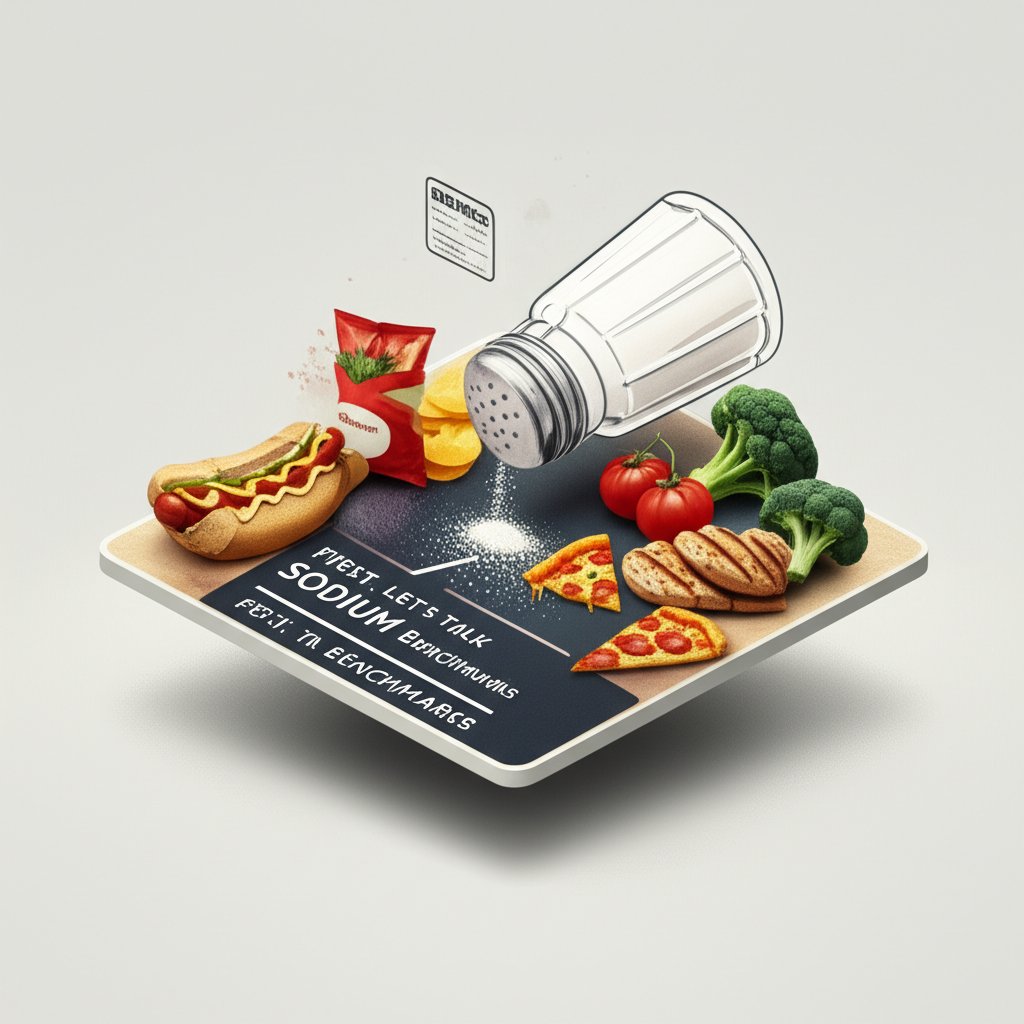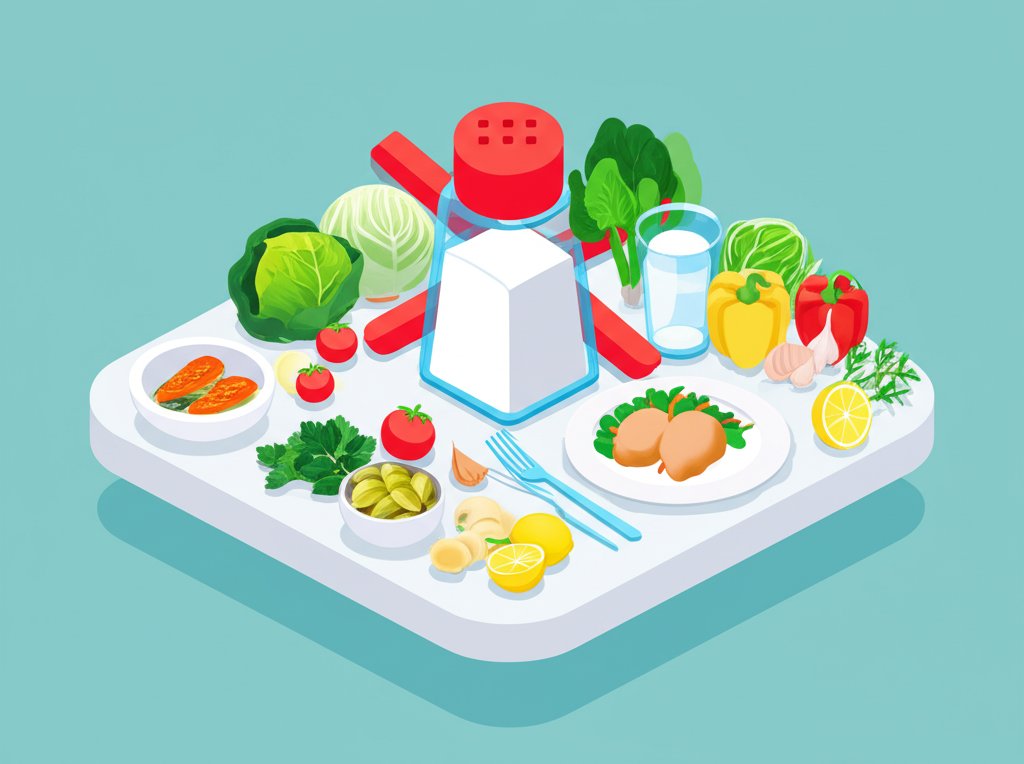Finding truly delicious, convenient meals that fit a heart-healthy diet can feel like a search for a unicorn. You’ve likely heard the buzz about Factor’s chef-prepared dishes, but a crucial question hangs in the air: can factor low sodium meals realistically fit into a salt-conscious lifestyle? While Factor doesn’t have a dedicated “low sodium” menu, the answer is a qualified yes—if you know exactly how to navigate their offerings.
This guide is your playbook for making Factor work for you. We’ll break down the numbers, walk through a step-by-step vetting process, and give you the unvarnished truth about who this service is truly for when sodium is a top concern.
At a Glance: Making Factor Work for a Lower-Sodium Diet
- Know Your Numbers: Understand the difference between the 1,500 mg and 2,300 mg daily sodium guidelines and what that means for each meal.
- No Dedicated Plan: Factor does not have a low-sodium filter. You must manually check the nutrition facts for every single meal you select.
- The 750 mg Rule of Thumb: Many Factor meals hover around 700-900 mg of sodium, making them a better fit for a 2,300 mg daily limit than a stricter 1,500 mg plan.
- A Vetting Strategy is Essential: We’ll show you how to scan the menu, identify potential lower-sodium gems, and build a balanced week.
- Best for Partial Meal Planning: Factor works best for someone needing one or two convenient meals a day (like lunch), while controlling sodium more strictly in other meals they prepare themselves.
First, Let’s Talk Sodium Benchmarks
Before you can evaluate any meal service, you need a clear target. Vague goals like “eating less salt” aren’t actionable. The American Heart Association (AHA) and the Dietary Guidelines for Americans provide concrete numbers to aim for.
- The Ideal Limit (AHA): For most adults, especially those with high blood pressure, the AHA recommends an ideal limit of no more than 1,500 mg of sodium per day.
- The General Limit (Dietary Guidelines): For healthy adults, the recommendation is to consume less than 2,300 mg of sodium per day.
To make this practical, let’s break it down per meal, assuming you eat three meals a day:
| Daily Sodium Goal | Approximate Sodium Per Meal |
| :—————- | :————————– |
| 1,500 mg (Ideal) | ~500 mg per meal |
| 2,300 mg (General)| ~765 mg per meal |
This table is your most important tool. When you look at a Factor meal, you can immediately see which budget it fits into. A meal with 750 mg of sodium is manageable within a 2,300 mg daily plan but would consume half of a 1,500 mg budget in one sitting.
The Unfiltered Truth About Factor’s Sodium Content

Let’s be direct: Factor is not designed as a low-sodium meal service. They prioritize flavor, convenience, and specific dietary patterns like Keto and Calorie Smart. As such, they do not offer a “Low Sodium” filter or a dedicated menu for this need.
Most standard factor low sodium meals (or rather, their lower-sodium options) tend to fall in the 650 mg to 850 mg range. Some meals, especially those with savory sauces, cheese, or cured meats, can easily exceed 1,000 mg of sodium per serving.
This is the central challenge. While Factor provides full nutritional transparency, the responsibility falls entirely on you to do the research for every meal, every week. If you’re looking for a service that does the sodium filtering for you, the broader landscape of the Best low sodium meal delivery services might offer better “set it and forget it” options, like bistroMD or Eat Clean, which build their menus around specific sodium targets.
However, if you enjoy Factor’s quality and are willing to be a savvy menu detective, you can absolutely make it work.
Your Playbook for Finding Lower-Sodium Meals on Factor

Think of yourself as a strategist. Your goal is to build a weekly box of Factor meals that aligns with your sodium budget. Here’s how to do it, step-by-step.
Step 1: Set Your Personal Sodium Budget
First, decide on your daily target: 1,500 mg or 2,300 mg. Be realistic. If you’re just starting to reduce sodium, aiming for the 2,300 mg limit is a great first step. If your doctor has prescribed a stricter diet for heart or kidney health, the 1,500 mg target is your non-negotiable benchmark.
This decision dictates your entire strategy.
- For a 2,300 mg Budget: You can likely enjoy one Factor meal per day (around 750 mg) and still have plenty of room for a lower-sodium breakfast (~400 mg), dinner (~800 mg), and a snack (~350 mg).
- For a 1,500 mg Budget: This is much tougher. A single 750 mg Factor meal leaves you with only 750 mg for the rest of the day. This path requires finding Factor’s absolute lowest sodium options (under 600 mg) and being extremely disciplined with your other meals.
Step 2: Become a Nutrition Label Detective
When you log in to select your weekly meals, ignore the tempting photos for a moment. Your first click on any meal should be to view its nutritional information.
- Find the Meal: Locate a meal that looks appealing on the weekly menu.
- Click for Details: Click the meal image or title to open the detailed description page.
- Scroll to Nutrition Facts: The full nutrition label is always available. Zero in on the “Sodium” line.
- Compare to Your Budget: Does the number fit your per-meal target (e.g., under 765 mg)? If yes, it’s a contender. If it’s over 900 mg, it’s probably a hard pass unless you’re planning an extremely low-sodium day otherwise.
Step 3: Identify Sodium-Sleuthing Patterns
After a few weeks, you’ll start to notice patterns. Certain ingredients and preparation styles are sodium magnets.
Meals Often Higher in Sodium:
- BBQ or Teriyaki Sauces: These sauces are notoriously high in salt and sugar.
- Cured Meats: Bacon, sausage, and cured deli meats pack a heavy sodium punch.
- Cheesy Dishes: Dishes like enchiladas or cheese-heavy casseroles tend to be higher in sodium.
- Keto-Labeled Meals: While not always true, the Keto diet’s focus on fat and protein can sometimes lead to higher sodium levels from processed meats and cheeses to enhance flavor. Always double-check.
Meals That Tend to Be Lower in Sodium: - Simple Herb-Roasted Proteins: A piece of roasted chicken or fish with herbs and spices is often a safer bet.
- Meals with Fresh Vegetables: Dishes centered on roasted or steamed vegetables like broccoli, asparagus, and bell peppers are good candidates.
- Lighter Vinaigrette-Based Sauces: Look for meals with sauces that are more vinegar-and-oil-based rather than creamy or soy-based.
A Real-World Example: Building a 3-Day Plan
Let’s imagine you’re on a 2,300 mg/day plan and want to use Factor for your work lunches.
| Meal of the Day | Day 1 Sodium (mg) | Day 2 Sodium (mg) | Day 3 Sodium (mg) |
|---|---|---|---|
| Breakfast (Home) | Oatmeal w/ Berries (5) | Greek Yogurt (65) | Scrambled Eggs (200) |
| Lunch (Factor) | Herb-Crusted Salmon (680) | Sun-Dried Tomato Chicken (720) | Grilled Steak & Potatoes (790) |
| Dinner (Home) | Salad w/ Grilled Chicken (550) | Lentil Soup (600) | Whole Wheat Pasta (450) |
| Snacks | Apple (1), Almonds (0) | Orange (0), Cheese Stick (180) | Banana (1), Peanut Butter (150) |
| Daily Total | 1,236 mg | 1,565 mg | 1,591 mg |
| As you can see, by choosing Factor low sodium meals in the ~700 mg range for lunch, you can easily stay well below the 2,300 mg daily limit by making mindful choices for your other meals. |
Quick Answers to Common Questions
Let’s tackle some of the most frequent questions and misconceptions about Factor and sodium.
Is Factor a good choice for someone with high blood pressure?
It depends on the severity and your doctor’s orders. If you are on a strict, medically supervised 1,500 mg sodium diet, Factor is likely not the most convenient or safest choice. The risk of accidentally choosing a high-sodium meal is significant, and the mental energy required to vet every item may be burdensome. Services that explicitly guarantee meals under 600 mg of sodium, like bistroMD’s Heart-Healthy plan, are a better fit.
Do Factor’s “Calorie Smart” or “Protein Plus” meals have less sodium?
Not necessarily. These labels refer to other macronutrient goals. A “Calorie Smart” meal might be low in calories but use salt to make up for flavor loss from fat. A “Protein Plus” meal could use processed meats that are high in sodium. There is no substitute for checking the nutrition label on every meal.
What’s a “safe” sodium number to look for in a Factor meal?
- Excellent: Anything under 600 mg. If you find one of these, grab it.
- Good: Between 600 mg and 750 mg. These are perfect for a 2,300 mg/day plan.
- Use with Caution: Between 750 mg and 900 mg. Only choose these if the rest of your day will be exceptionally low in sodium.
- Avoid: Anything over 900 mg. These meals make it very difficult to stay within a healthy daily limit.
Can’t I just request lower-sodium meals from Factor?
No. Factor does not currently offer meal customization or special dietary requests beyond the plans they offer. The menu is fixed weekly, and the nutritional content is set.
The Final Verdict: Is Factor Right for Your Low-Sodium Journey?
Making an informed decision comes down to weighing convenience against control. Let’s break down who is—and isn’t—a good fit for using Factor on a lower-sodium diet.
Factor Is a Great Fit For You If…
- Your daily sodium target is around 2,300 mg.
- You are willing to diligently check the nutrition facts for every meal you select.
- You only plan to use Factor for one meal per day, giving you flexibility and control over your other meals.
- You prioritize the convenience and flavor of Factor’s prepared meals and are happy to do the nutritional legwork yourself.
You Should Probably Look Elsewhere If…
- You are on a strict, medically necessary 1,500 mg sodium diet. The risk and effort are likely too high.
- You want a “set it and forget it” solution where you don’t have to think about sodium content.
- You need a service that can accommodate multiple, complex dietary restrictions simultaneously (e.g., low sodium, low potassium, and low phosphorus for kidney disease).
Ultimately, while the term factor low sodium meals isn’t an official category they offer, it’s a goal you can achieve with knowledge and effort. By using your sodium budget as a guide and treating the weekly menu as a puzzle, you can strategically enjoy the convenience of Factor without compromising your health goals.
- Bulking Lunch Recipes that Make Muscle Gain Delicious - November 12, 2025
- Simple Asian Meal Prep Recipes to Spice Up Your Week - November 11, 2025
- Simple Asian Meal Prep Ideas For Healthy And Flavorful Weekday Meals - November 10, 2025










